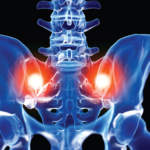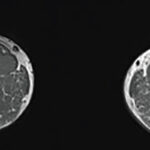Infographics or posters in doctor’s office waiting rooms may help explain this to some patients, as doctors themselves may not have time to go into depth, he told Reuters Health by phone. But work still needs to be done on communicating this public health message.
“Our study showed that almost all clinicians were aware that an imaging test was not indicated for a patient with low back pain without danger signals of severe spinal problems and agreed with the Choosing Wisely recommendations to not do testing,” Sears tells Reuters Health by email. “Instead, clinicians worried about not having sufficient time to explain the risks and benefits of testing to patients, were concerned over medical liability if tests are not ordered or rare diagnoses are missed, and noted that they cannot refer patients to specialists without first ordering imaging, even if they think the imaging will not change patient management.”
CT scans expose the patient to radiation, which can add up over time, and even without inherent dangers an unnecessary test could reveal an unexpected finding that may be insignificant to a patient’s health but lead to more testing, and sometimes complications, Sears says.
“Patients should first have a thorough history and physical exam to rule out presence of ‘red flag’ symptoms and are often first referred to physical therapy in the initial treatment period,” she says. “Because low-back pain tends to come back, staying active, through activities such as walking, yoga, and supervised training, is key to warding off recurrence.”
Reference
- Sears ED, Caverly TJ, Kullgren JT, et al. Clinicians’ perceptions of barriers to avoiding inappropriate imaging for low back pain—knowing is not enough. JAMA Intern Med. 2016 Oct 17. doi: 10.1001/jamainternmed.2016.6364. [Epub ahead of print]

